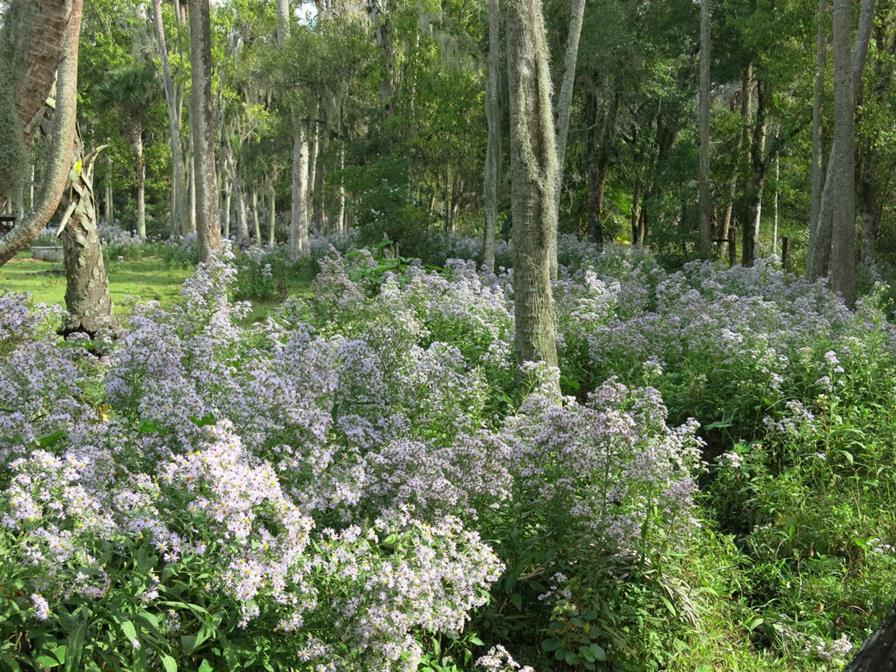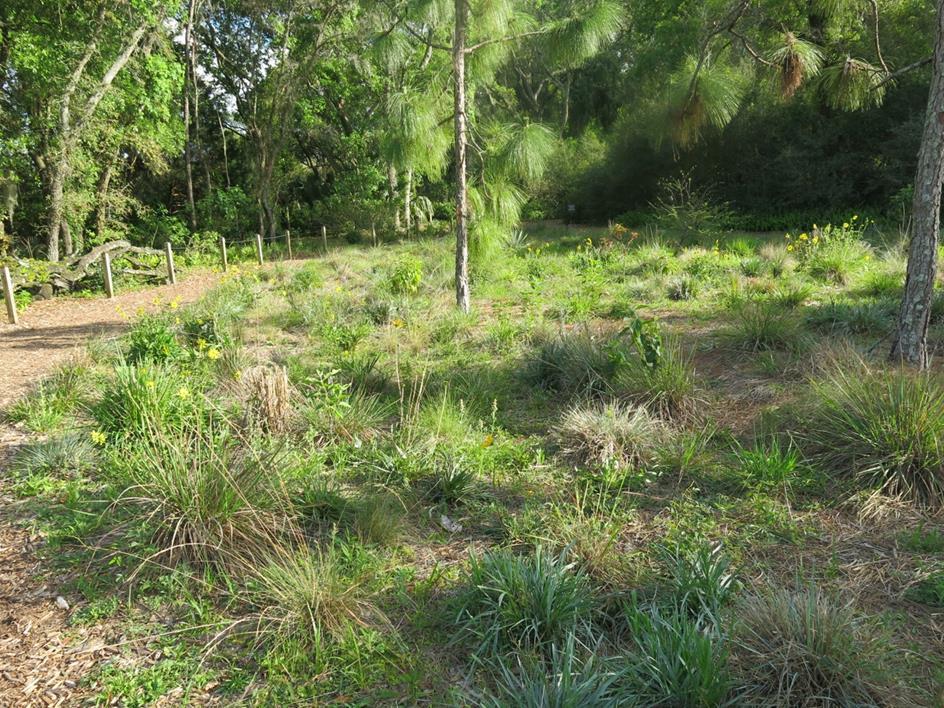



Sandhill at Bok Tower and Tall Timbers














Some plants were difficult to include, some were difficult to establish, others easy

Many aster species




Sedges are the structure plant of most bogs and wet prairies.





Sandhill before planting was a bahia lawn, then parking lot and storage.
Part of it has the drainfield for Bok Tower.



Wet prairie underlain with clayey sand then covered with peat and sand mix 12 inches deep.

Wetland constructed to filter and clean water from adjacent pond.




Bog has plastic liner covered with 4 parts peat and 1 part sand. The plastic liner is 12 inches below lip and water seeps out after rains.


Seed for most of the plants was hand collected from natural areas or previously restored areas.

Some plants were dug in small clusters in wet prairies.

Flail Vac harvested seed was spread after planting in sandhill.

It was mixed with hand harvested species.



Bog plants laid out in patterns before planting.

Our crew was so happy to be working at Bok Tower.


All holes were dug with auger, hand planted, and tucked in.



Inter-seeding may prevent or lessen weeds
Sandhill planted next to walk and continues naturally into existing sandhill.



In all meadow or prairie areas 2 grasses are planted for each wildflower



Splitbeard Bluestem Green eyes Blazing star
Lovegrasses
Lopsided indiangrass
Red sage










Liatrisohlingerae
Scrub Blazing Star






























Life, uh . . . . finds a way
Ecological restoration is the process of assisting the recovery of an ecosystem that has been degraded, damaged or destroyed. It is an intentional activity that initiates or accelerates an ecological pathway— or trajectory through time—towards a reference state ..a moving picture from the past or we can project it into the future.
If we did this … or that … what would happen next It is problem solving
Aristotle @350BC, Parmenides @485 BC “On Nature”



Plants niches are often thought of as needing just physical ground space - mental trap
All the environmental conditions needed for an organism or its population to persist
• Light
• Hydrology
• Nutrients
• Soils
• Structure
• Climate
• Competitors
• Predators
• Mutualists
• Etc.
Who gets there first? Who lasts through time?
FQI Floristic Quality Index - Gerould Wilhelm
C Coefficient of Conservatism
each species grades 0-10
0 obligate to ruderal areas
1-3 varying affinity to ruderal areas
4-6 varying affinity to natural areas, quality of area is variable
7-9 varying affinity to high quality natural areas
10 obligate to high quality natural areas
Aggressive and Exotic Weedy Species 0 points
Native Weedy Species 1 - 2 points
Pioneer Species 2 - 5 points
Characteristic Species 4 - 10 points
Aggressive - Species that out-compete weedy species and sometimes will even out-compete characteristic species of stable ecosystems; these species are not native.
Weedy- Species that depend on unnatural or severe disturbances to become established.
Pioneer - Species that readily reseed or spread in unnatural or disturbed areas but persist and are characteristic of mature ecosystems also.
Characteristic - Species that are found in mature ecosystems
Maintenance was done with spot spraying and hand weeding.

Some native plants can overwhelm a landscape and may need to be controlled.





Wild fires are part of the ecology in Florida.



Wildflower and grass meadows are particularly vulnerable to change because they are
*seasonal
*non-woody
*moving by seed and rhizome
*may be short lived
*not always recognizable
1. Describe the vision for the meadow
1. Read frequently and follow with observation by a supervisor
1. Understand what plants may need to be controlled
1. Teach maintenance personnel specifically and frequently, often 1 or 2 plants at a time
1. Look out for creeping problems
1. Use irrigation to establish and when needed.





















Take a walk on the wild side, build natural areas where people can immerse themselves in life.